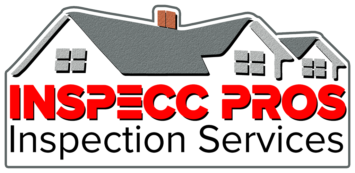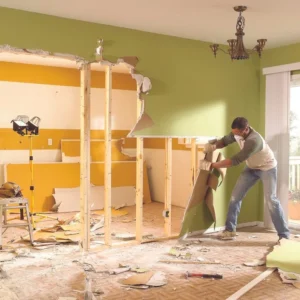
The process of buying a home is full of highs and lows. It can be both exhilarating and highly stressful all at the same time. Once you’ve finally settled on the home and have an accepted purchase offer, your next hurdle is the home inspection.
You may be tempted to waive your home inspection; however, this is not a good idea. There are many advantages to order a home inspection before closing. So why are home inspections important?
Home inspections are important because, for most people, buying a house is the single largest investment they’ll make in their lifetime. A home inspection is a small investment to help make an informed buying decision. The purpose of a home inspection is to understand the home’s overall condition better and determine what repairs are needed immediately and what repairs will be needed soon.
Let’s look at 21 reasons why home inspections are important.
Home Inspections Can Discover Problems You Can’t See
It’s easy to fall in love with a potential new home. You think you have found the perfect property, one that fits all your family ‘s needs. It has everything you’ve been looking for, a great kitchen, spacious living areas, and multiple bathrooms. The home may appear to be in excellent condition.
A home inspector is trained to inspect the home for structural problems, health and safety issues, and problems with roofing, or problems with the mechanical, electrical, or plumbing systems.
Having a home inspector that will walk on the roof, go into the crawlspace, and climb in the attic can protect you against problems that aren’t always visible.
Home Inspections Protect You From Buying a Money Pit
No one likes to be stuck with a lemon, and homes with major problems can turn into a real money pit. After you’ve moved into a new house is not the time to find out that there are major foundational, roofing, electrical, or plumbing issues.
Major problems with the foundation, electrical, plumbing, or roof can cost you tens of thousands of dollars to repair and months of dealing with contractors and living in a home while it’s being renovated.
Having a certified inspector provide a thorough examination of the home before you sign on the dotted line can help you avoid buying the money pit.
Don’t let a facade fool you. Take the time to have a certified home inspector look deeper to be sure you’re making a sound investment.
Home Inspections Can Avoid Costly Structural Problems
Nothing can ruin a new home purchase, like finding out after the fact that the home has structural problems. This home inspection deal-breaker can kill your purchase if you’re not careful. Foundation issues are major home inspection red flags that a thorough home inspection can avoid before purchase.
New home construction is not exempt from having structural problems. Many new homes are built on deforested land developments or prior wetlands, which can cause sinkholes and other settlement issues.
Structural problems are often not easy unless you know the signs to look for. I have seen many houses advertised as renovated only to discover that structural problems or improper repairs were done in the crawlspace.
One example, a few years back, I inspected a house where the interior had been completely renovated with an all-new kitchen, bathrooms, carpeting, paint, and many other amenities. Inside, the house looked great, but a nasty secret existed in the crawlspace. There were ventilation problems that caused significant wood rot behind the front porch, which resulted in over $25,000 in structural repair work.
Home Inspections Save You Money
The typical home inspection costs about $400. However, if a home inspection notates needed repairs or potential problems with the home, it could save you thousands of dollars.
In a case study published by Scott Home Inspections, they determined that over a 50 inspection case study, the Average Home Inspection Cost was $662.76 with an Average Repair Cost Per Inspection of $4,120.41.
More important, of the 50 homes inspected, 43 had repair costs that exceeded the home inspection cost. The other 7 homes all had repair costs that were greater than 50% of the inspection cost.
Often after the home inspection, you’ll enter into negotiations with the seller to address items identified in the home inspection. Negotiations often lead to a price reduction or a repair credit, allowing you to fix the items listed in the home inspection report.
I’ve been inspecting homes since 2002. I agree with the findings in the Scott Home Inspections case study. I’ve found that on average, a $400 average home inspection can discover between $3000-$5000 worth of needed repairs. While this is not always the case, even one repair can help pay for itself.
Home Inspections Turn Negotiations in Your Favor
Having a home inspection performed could give you the power to negotiate a lower sales price. The major issues discovered during the home inspection can give you the bargaining power to get a lower sales price.
A home inspection can be beneficial if your budget is tight, but you like the house and need a little room to maneuver. If negotiations haven’t gone well thus far and the seller has been firm on price, having a home inspection could be the leverage you need to get the price you wanted.
Typically, if major issues are found in a home inspection, the seller will offer repairs, provide a repair credit, or offer a price reduction.
Home Inspections Provide an Exit Opportunity
A purchase offer is a binding real estate contract. It states that you agree to pay the seller the agreed-upon price for the home. Most (but not all) purchase agreements are made “contingent on a home inspection.” See our home inspection checklist for a printable home inspection checklist pdf.
Your real estate agent should make your offer contingent on a home inspection when you make a purchase offer. This contingency period will typically allow you 7-10 days to have a home inspection completed as part of your due diligence.
If you waive your home inspection, you are, in essence, accepting the home “as is,” including any underlying problems the home may have.
The home inspection allows you the opportunity to collect as many facts as possible about the home and reconsider your position to purchase the home based on those findings. If you don’t like what you find out, you can exit the contract and often (not always) get a refund of your earnest money.
Home Inspections Can Help Identify Roofing Age & Leaks
A new roof is one of the costliest building components to replace. A new architectural shingle roof can cost more than $10,000 for even an average-size home. Larger homes with complicated roof designs can cost up to $25,000 or more to replace.
Most home inspectors will walk the roof provided it’s safe to do so. A home inspection is a great way to find out information about the roof’s overall condition. A thorough home inspection can tell you approximately how old the roof is and maybe, more importantly, how much longer the roof may last.
For more on roofing problems found in home inspections, see Common Roof Problems Found During Home Inspections.
Home Inspections Can Alert You to Electrical Problems
Electrical systems are often very confusing. Just because the light functions properly doesn’t necessarily mean the electrical system is in good working order. The fact is, even the smallest electrical defects can cause a devastating house fire.
If you buy an older home, having a home inspection to examine the electrical system is crucial. Home inspectors typically find more electrical defects than in all other categories combined.
Many people don’t consider the fact that an electrical system has a life expectancy. Electrical systems and their components have various life spans ranging from five years to 70 years. Items like GFCI and AFC breakers and outlets can last as little as five years. Electrical panels and wiring can last 60 to 70 years.
To upgrade the electrical system in the house, including re-wiring electrical panels and outlets, you can expect to pay upwards of $15,000 for even a small home. Larger homes can cost upwards of $30,000 or more.
Home Inspections Can Reveal Plumbing Problems
Plumbing problems can exist in both new homes and older homes. Today’s tech-savvy home inspectors use various inspection tools, such as infrared cameras and moisture meters, to help detect plumbing leaks. If not caught and addressed early, plumbing leaks inside crawl spaces can lead to significant problems, like structural damage and mold.
Plumbing leaks, particularly inside crawl spaces, can go undetected for years without routine home inspections. Buyers should realize that these deficiencies can exist, and the seller has no idea there’s a problem.
Other problems with the plumbing systems include defective piping such as ABS waste piping or polybutylene supply piping. These products have been the subject of class-action lawsuits and are still present in thousands of homes today.
Old piping, like cast iron or galvanized supply pipes, is still commonly found in older homes. Old piping can be costly to remediate and often requires extensive renovations to remove it fully.
Home Inspections Can Reveal Mechanical Problems
Mechanical problems can exist in any home regardless of age. I’ve witnessed mechanical problems in newly constructed homes, from improper or faulty installations to condensation on uninsulated refrigerant lines resulting in water damage and mold growth.
Many mechanical systems such as heating and cooling systems do not get the recommended annual maintenance they should. Dirty heating and cooling systems tend to run longer and wear out quicker than those that have been well-maintained.
Problems with mechanical systems can cost hundreds of dollars to repair up to $10,000 or more for a complete system replacement.
Home Inspections Can Discover Pest and Insect Infestations
Pest and insect infestations such as beetles, bees, carpenter ants, and subterranean termites can wreak havoc on a house’s wood-frame structure. The problem is, much of this damage is not visible to the untrained eye. Termites feed on wood materials in crawlspaces, attics, and inside wall cavities.
While not always the case, termites generally accompany other long-term problems like wet crawlspaces, perimeter drainage problems, and poor ventilation. Termites and other wood-destroying organisms thrive in wet areas. Treating wood-destroying organisms alone isn’t always enough.
A termite treatment can cost several hundred dollars to thousands of dollars, depending on the severity of the condition. On average, according to Fixr.com, chemical termite treatment can cost $300 – $900.
Home Inspections Can Help Avoid Potential Health Issues
Potential health issues can arise in both new construction homes as well as 100-year-old homes. Potential health issues include radon gas, mold growth, asbestos, and lead-based paint.
Depending on the severity of the case, these potential health issues can lead to respiratory problems, debilitating illnesses, and in some rare cases, even death.
Home Inspections Cite Various Safety Issues
The presence of safety issues can range from an uneven payment and missing handrails on steps to environmental and electrical issues, potentially dangerous. See Common Safety Issues Found During Home Inspections for a complete list of common safety failures in home inspections.
Home Inspections Can Determine Improper Additions
This is especially true for rural properties. Many of these areas or outside of the jurisdiction of building code enforcement officers or were done without proper building permits.
As home inspectors, we often find additional problems, including improper foundation support, non-standard framing methods, improper electrical work, etc.
Home Inspections Can Help Prioritize Home Repairs
Having a home inspection allows you the opportunity to prioritize repairs needed based on the advice of an unbiased, trained professional.
A home inspection will help you identify areas of importance you may not have seen or considered based on safety and building integrity.
For example, a home inspector can help you identify which repairs are needed now and which ones can wait. You can prioritize and identify repairs based on the age and condition of major components or systems like water heaters, roofing, or electrical.
You’re Not a Home Inspector
This statement is not met to insult you. However, sellers will likely not negotiate with you without an independent home inspector’s professional report.
It’s a good idea to educate yourself and even use a home inspection checklist to help select a home to buy. However, a professional home inspector can examine the property without emotional attachment and form a professional opinion based on observations and years of experience.
It’s critical to hire a home inspector with the proper training, certifications, and licensing (in licensing states) to do a thorough, unbiased inspection.
Home Inspections Can Help Determine Maintenance Costs
A home inspector can help you to identify what maintenance items have been neglected. The inspection report can help you (and your contractor) form an estimated cost to get the home maintenance back on track.
A home inspector can help you identify maintenance items such as HVAC service, gutter cleaning, exterior painting, water heater maintenance, etc., that are needed immediately.
Home Inspections Educate You About the Home
Having a home inspection is an opportunity to educate yourself about the home you’re looking to purchase. If you attend the home inspection, most home inspectors will be happy to take the time and show you where things are located and discuss their findings with you.
The inspection can help you to identify the age and condition of mechanical devices, the location of fuel shut off valves, the location of water shut off valves, the condition of the roofing materials, the electrical disconnects and breaker panels, where to go to change your air filters, etc.
Also, since most sellers are not present for the home inspection and the average inspection time is 2-3 hours, you get access to the property to fully examine the grounds, house, outbuildings, etc., while the home inspector is providing their service.
Home Inspections Help You Plan For Future Repairs
Many people, when buying a house, have plans to do renovations and other repairs. Having a home inspection can help you to plan for those future repairs.
Having a home inspection can help you gather the information needed, such as where water lines are located, electrical updates needed, the existing heating and cooling system be sufficient, etc.
Home Inspections and Your Insurance Needs
When purchasing a home, you will have to purchase a new homeowner’s insurance policy. If your home is over a certain age, your insurance agent would likely require a four-point inspection.
The four-point inspection gathers information on the roof’s condition, electrical updates, plumbing updates, and heating/cooling updates. Home inspectors gather most of this information during a home inspection. Many home inspectors, for a fee, will complete this paperwork to turn it into your insurance company.
The insurance underwriter uses this information to help assess the risk level for your insurance policy and determine your insurance premium.
Home Inspections Provide Peace of Mind
Lastly, and probably most importantly, a home inspection can help give you peace of mind that you’ve made a good buying decision. A thorough home inspection is just an all-around good decision. Buying a home is a big deal, and a thorough home inspection is an important part of the process.
Don’t take your home inspection for granted. Be engaged and ask your home inspector questions about their findings. Your home inspector can’t make the buying decision for you, but they can tell you the most important items and explain their findings in more detail.
Peace of mind comes from gathering as much information as possible, understanding the information presented clearly, and maintaining realistic expectations.
DISCLAIMER: The content published on HomeInspectionInsider.com is not professional advice. You should consult with a licensed professional and check local permit requirements before starting any project.
This article was written by Hubert Miles at homeinspectioninsider.com




Good info